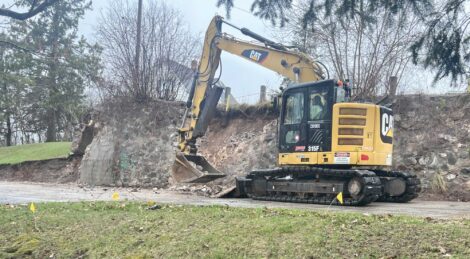No CWD in wild deer in Florence, Marinette counties

THE WISCONSIN NATURAL Resources Board has approved regulations to allow deer management to be based on habitat rather than county lines in the forests of central and northern Wisconsin. (Wisconsin Department of Natural Resources image)
MADISON, Wis. — Chronic wasting disease was not detected in any of the 266 deer in Florence, Forest and Marinette counties that were tested in the past year, the Wisconsin Department of Natural Resources said.
With the conclusion of the 2024 deer hunting seasons, the DNR on Monday shared a summary of its CWD sampling efforts.
The DNR focused its efforts on increasing sample collection in designated priority areas. As usual, testing was available statewide, but the additional samples tested from the priority areas helped the DNR better understand disease levels and distribution in areas with recent detections, officials said.
In total, 17,399 deer were sampled throughout the state during the 2024 CWD year, with 1,786 samples testing positive. Nearly 90% of these detections were in the Southern Farmland Zone.
A total of 242 sampling locations were available throughout the state, including 166 self-sampling kiosks and 76 staffed sites. Disposal sites — 154 in total — including dumpsters, landfills and transfer stations, were available for deer carcass waste. The average number of days statewide from when a sample was dropped off at a sampling location to when the CWD result was emailed to the hunter was 8.4 days.
“The DNR sincerely thanks all the hunters who submitted a sample for CWD, the business owners who managed a CWD sampling site and those who participated in the Adopt-a-Kiosk or Adopt-a-Dumpster partnerships this year,” the agency said in a news release.
There were 38 samples analyzed from Florence County, 43 from Forest County and 185 from Marinette County. Of the 272 samples from Vilas County, one was positive.
To date, the northernmost wild CWD-positive detection is in Vilas County. Deer baiting and feeding is prohibited in Vilas County as well as Florence, Forest and Marinette counties, although confirmed CWD-positives in the latter three counties have only been in captive deer. Under state law the DNR is required to enact a ban in any county within 10 miles of a captive or free-roaming deer that tests positive for CWD or bovine tuberculosis.
CWD is a fatal, infectious nervous system disease of deer, moose, elk and reindeer/caribou. It belongs to the family of diseases known as transmissible spongiform encephalopathiesor prion diseases. The DNR began monitoring the state’s wild white-tailed deer population for CWD in 1999. The first positives were found in 2002.
Prior to the 2024 hunting season, the DNR chose priory areas by reviewing the CWD sampling data and determining areas where additional samples and information were most needed. These areas were primarily around recent CWD-positive detections of wild and farm-raised deer in portions of central and northern Wisconsin.
This year, two counties within the priority sampling areas, Pierce and Menominee, had their first wild CWD-positive detection. Polk and Vilas detected the second wild positive in the county. In Oneida County, three additional positives were detected in the eastern part of the county.
Several areas in eastern Wisconsin saw additional positive detections in 2024. Waushara and Fond du Lac had only detected one positive prior to the 2024 season, and each county detected several additional positives. Waupaca detected its third CWD positive. Shawano detected three additional CWD positives, and two of them were in different areas of the county from past detections.
CWD positives were also detected in several of the counties in the west-central or central part of the state, including Adams, Buffalo, Dunn, Eau Claire, Jackson, Juneau, Marathon, Monroe, Portage and Trempealeau.
CWD sampling in southern Wisconsin continues to help measure disease patterns and changes in the disease prevalence over time. During the 2024 CWD year, 7,680 samples were tested in the Southern Farmland Zone, and 1,583 were positive for CWD.
Additionally, the DNR shared results from a large CWD study on the endemic area, the area of southwest Wisconsin where CWD was first detected. These results — from the Southwest Wisconsin CWD, Deer and Predator Study — were recently presented to the Natural Resources Board. The results showed that CWD substantially reduces deer survival rates, suppresses population growth and can cause deer populations to decline in areas where CWD prevalence is high. While there are areas of high CWD prevalence in several counties in southern Wisconsin, the prevalence rate is not consistent throughout those counties or the entire state.
Two counties outside of the priority sampling areas and endemic area, Chippewa and Manitowoc, had their first wild positive detection in 2024. Oconto County detected its second wild positive in the center of the county, three years after the first positive was detected.
“Although we have detected CWD in new areas of the state in recent years, many of these areas are at a low prevalence rate, and opportunities still remain to slow the spread and growth of the disease statewide,” said Erin Larson, DNR deer herd health specialist.
The DNR reminds the public that there have been no reported cases of CWD infection in humans to date. However, public health officials recommend against consuming meat from deer that test positive for CWD and to consider testing deer prior to consumption, especially in areas prevalent with CWD.



